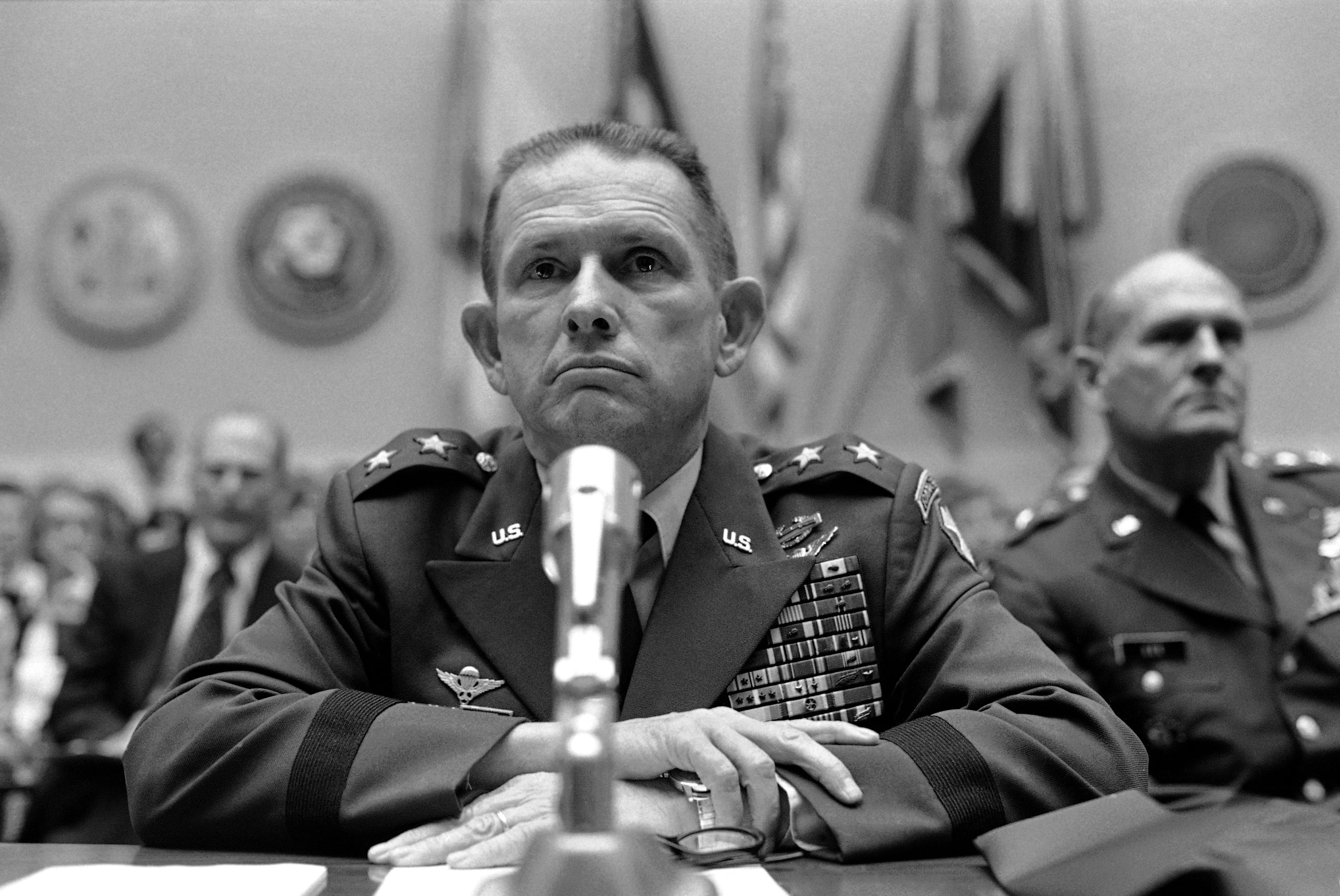WASHINGTON — Republican presidential candidate Donald Trump has alarmed U.S. allies in Asia and elsewhere by suggesting that American military support should depend on their willingness to pay. But he would not be the first U.S. president to consider shaking up time-honored military deployments.
Four decades ago, President Jimmy Carter tried to withdraw troops in South Korea, and failed. He wanted to trim the defense budget and pressure South Korea over human rights abuses, but hit a wall of opposition.
If history shows that some of Trump's proposals aren't unprecedented, it also demonstrates the political perils of tinkering with alliance commitments. Those commitments may be more urgent today than in Carter's time, given North Korea's growing nuclear arsenal and its progress toward having missiles that could strike the United States.
A senior North Korean diplomat warned in an Associated Press interview last week of a vicious showdown if the U.S. and South Korea hold annual war games as planned this month. Pyongyang is seething after Washington slapped sanctions on its leader, Kim Jong Un, over human rights abuses.
The U.S. retains about 50,000 troops in Japan and 28,500 in South Korea. Advocates say that has fostered peace and prosperity in a region of intense rivalries and means the U.S. is better-placed to deal with North Korea's nuclear threat.
Democratic candidate Hillary Clinton, a former secretary of state, sees it that way. Trump does not.
Although Asian allies pay about half the cost of stationing U.S. forces on their soil, Trump has said Japan and South Korea should pay more or he might withdraw U.S. troops. He's also open to Japan and South Korea acquiring nuclear weapons rather than relying on American deterrence. That could spark a regional atomic arms race.
The U.S. forces in South Korea are a legacy of the 1950-53 Korean War that ended without a formal peace treaty. Troop numbers have fallen over the years. In 1971, President Richard Nixon withdrew about one third of the 60,000 U.S. troops there, despite stiff opposition from Seoul.
Carter, who had been a submarine officer in the Pacific during the Korean War, was determined to go further when he took office in 1977.
American public opposition to military involvements abroad was running high after the Vietnam War. Also, Carter was no fan of South Korean dictator Park Chung-hee, who imprisoned political opponents.
In 1977, Carter signed a top-secret order to remove 15,000 troops by mid-1980 — out of a total of about 40,000 — and eventually remove nuclear weapons from South Korea, while keeping the Air Force in place.

Maj. Gen. John K. Singlaub testifies on May 26, 1977, on Capitol Hill in Washington at a House Armed Services subcommittee on the military situation in Korea. Singlaub, the fourth-ranking American officer in Korea, was removed from his post for saying President Jimmy Carter's U.S. troop withdrawal plans would lead to war.
Photo Credit: AP
Many of Carter's top advisers opposed the drawdown. Maj. Gen. John Singlaub, the chief of staff of the U.S. Command in Korea, went public with his objections. He warned in a newspaper interview that it could lead to war. Carter reassigned him.
South Korea was worried about Carter's drawdown proposal from the time he was advocating it as a candidate.
North Korea expert Bob Carlin, who was CIA analyst at the time, recalled a South Korean army colonel taking him in November 1976 to a tunnel that had been dug by North Korea under the demilitarized zone, or DMZ, between the two Koreas. He said the colonel launched into a long complaint about the dangers from the North and the gullibility of Americans in wanting to withdraw troops.
The killer blow to Carter's plan was a U.S. intelligence report in 1978 that North Korea had 40 percent more ground forces than earlier thought, and a two-to-one advantage over South Korea in tanks and artillery.
At a tense June 1979 summit, South Korean President Park lectured Carter on why withdrawing forces would be a mistake. Carter then had a heated discussion with his top advisers in the presidential limousine as they returned to the Seoul residence of then-U.S. ambassador William Gleysteen.
In his memoir, Gleysteen recounted an angry debate with Carter, as South Korea's prime minister looked on. Ultimately, Carter backed down on troop withdrawals after Park committed to increase South Korean defense spending and release 180 political prisoners.
After four years in office, Carter had reduced U.S. troop numbers in Korea by less than 3,000. He blamed pressure from the Pentagon and the CIA.
"I was somewhat skeptical of intelligence reports that North Korea had doubled the size of its military within a few years, but had no way to disprove them," Carter wrote in his 2010 memoir, "White House Diary."
He made a bigger impact after his presidency. In 1994, Carter paved the way for a now-defunct aid-for-disarmament deal.
Bigger U.S. troop reductions occurred in the mid-2000s, when President George W. Bush shifted forces from South Korea to meet military demands in Iraq. That coincided with a thaw in inter-Korean relations. But even during periods of reduced tension, the standoff at the DMZ has continued




